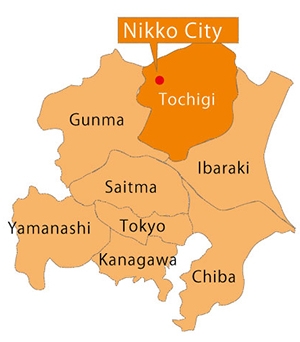SPOT
Rinnoji Temple’s Gohan-shiki (rice-forcing) Festival (April 2) is an unusual ordeal in Nikko
March 15, 2018
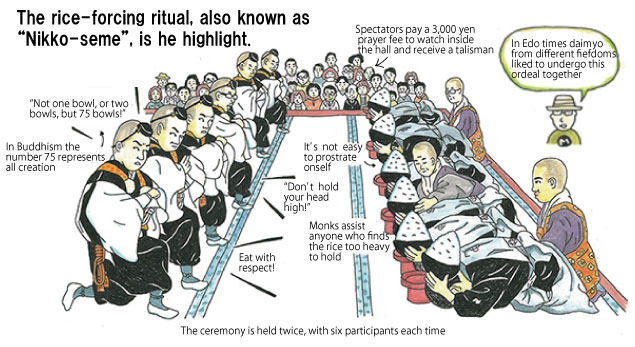 In this quirky ceremony held at a Nikko World Heritage site, participants are forced to eat huge bowls of rice, which are said to bring them great fortune.
In this quirky ceremony held at a Nikko World Heritage site, participants are forced to eat huge bowls of rice, which are said to bring them great fortune.
A Dramatic Ceremony Draws Laughter and Gasps
Every year on April 2, a very peculiar ceremony is held at Rinnoji Temple in Nikko. “Clean it all up, every last grain!” is the order given to participants as they eat their way through a large bowl heaped with rice. This is the Gohan-shiki, or rice eating ceremony. A name like that suggests that this is a fun, quirky festival perfect for a big eater such as myself, but in fact this ritual originated from Shugendo (mountain asceticism) practices that have been observed in the Nikko mountains since ancient times.
The ceremony is conducted twice, at eleven in the morning and two in the afternoon, in the main hall at Rinnoji, the Sanbutsu-do. A procession of monks led by a yamabushi (mountain priest) blowing a trumpet shell enter the hall, followed by the monks who dispense the rice. A heavy wooden door closes behind them with a noisy creak, and the ceremony begins.
Although it is April, the interior is chilly and only faintly lit by candles. The atmosphere is solemn, with ceremonial chanting of sutras and ritual burning of holy cedar-sticks. Flames from the fire flicker and throw light on the Amida Nyorai image enshrined in the hall. It is a truly mysterious spectacle.
The ceremony is conducted twice, at eleven in the morning and two in the afternoon, in the main hall at Rinnoji, the Sanbutsu-do. A procession of monks led by a yamabushi (mountain priest) blowing a trumpet shell enter the hall, followed by the monks who dispense the rice. A heavy wooden door closes behind them with a noisy creak, and the ceremony begins.
Although it is April, the interior is chilly and only faintly lit by candles. The atmosphere is solemn, with ceremonial chanting of sutras and ritual burning of holy cedar-sticks. Flames from the fire flicker and throw light on the Amida Nyorai image enshrined in the hall. It is a truly mysterious spectacle.
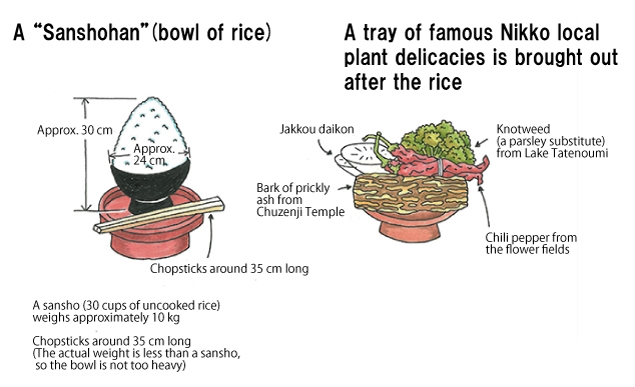
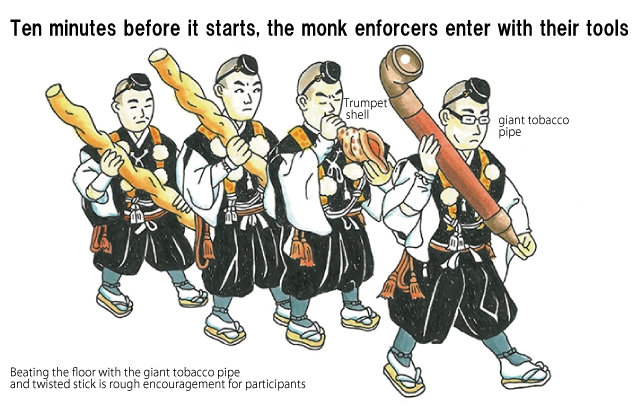
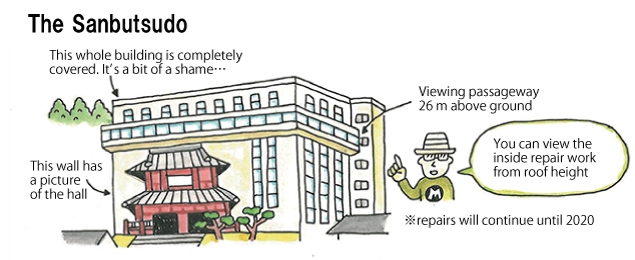
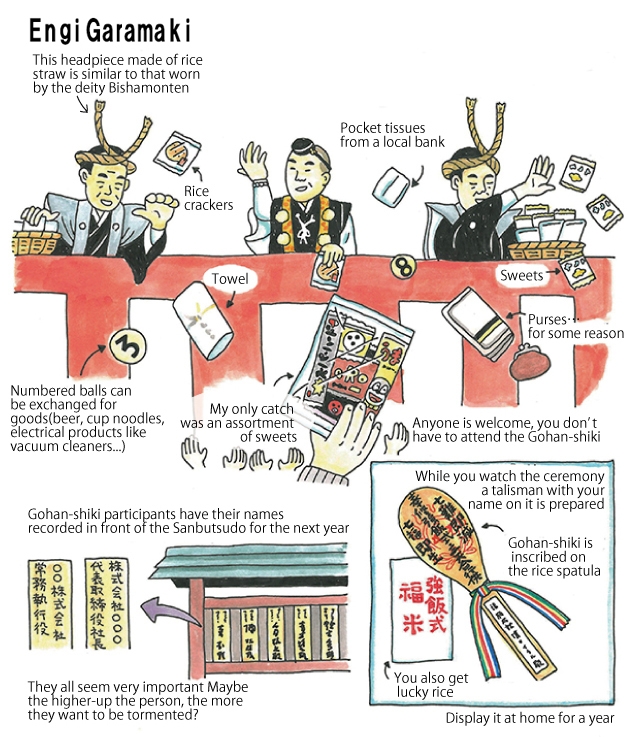 A ceremony to distribute offerings to everyone
A ceremony to distribute offerings to everyone
